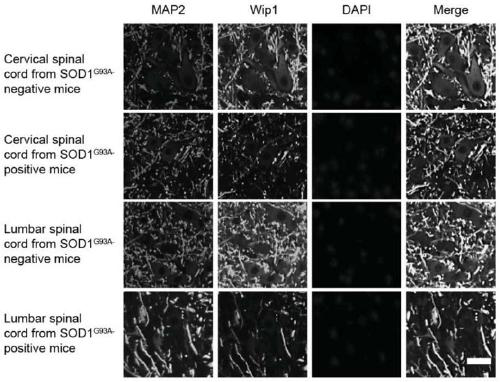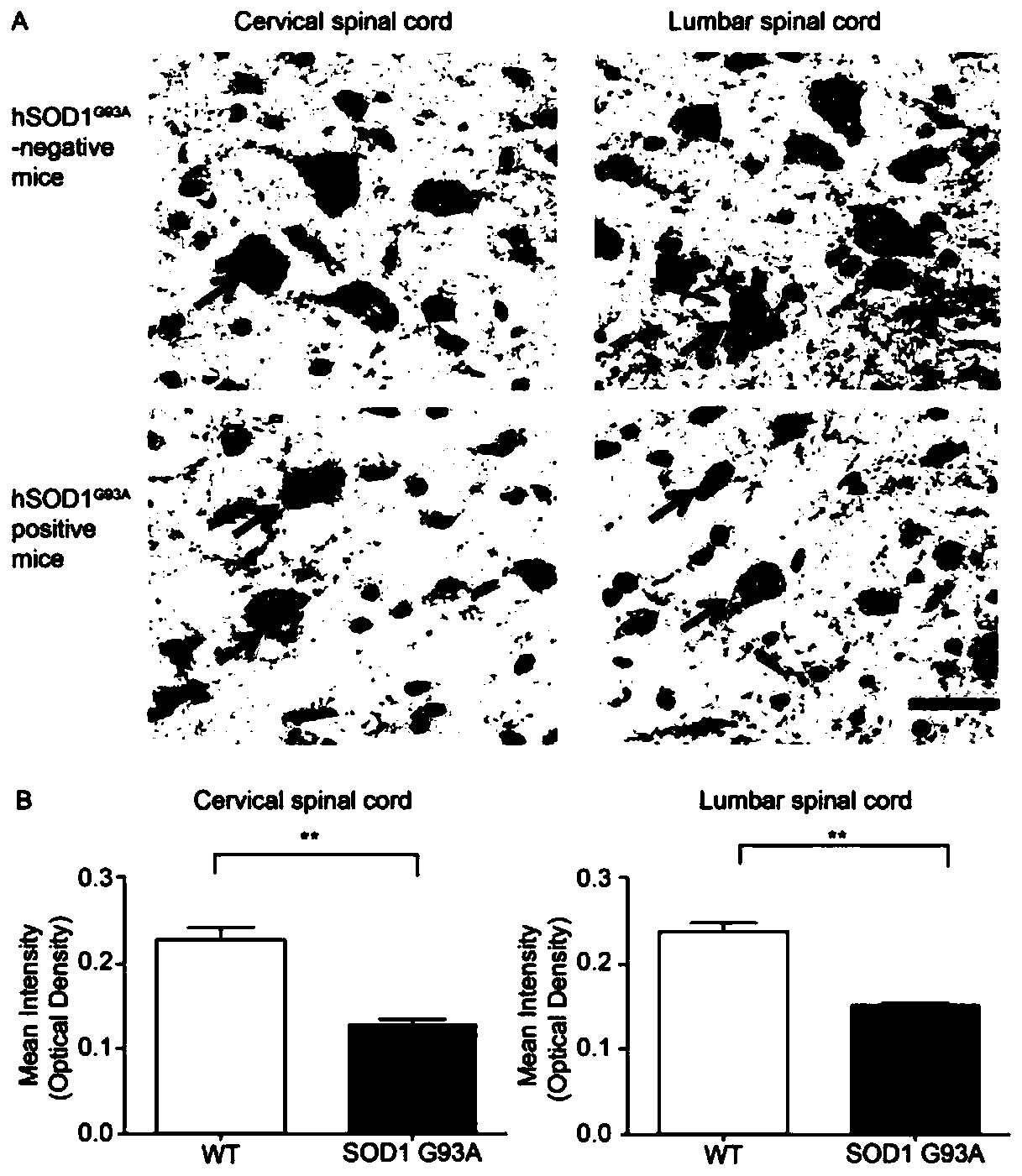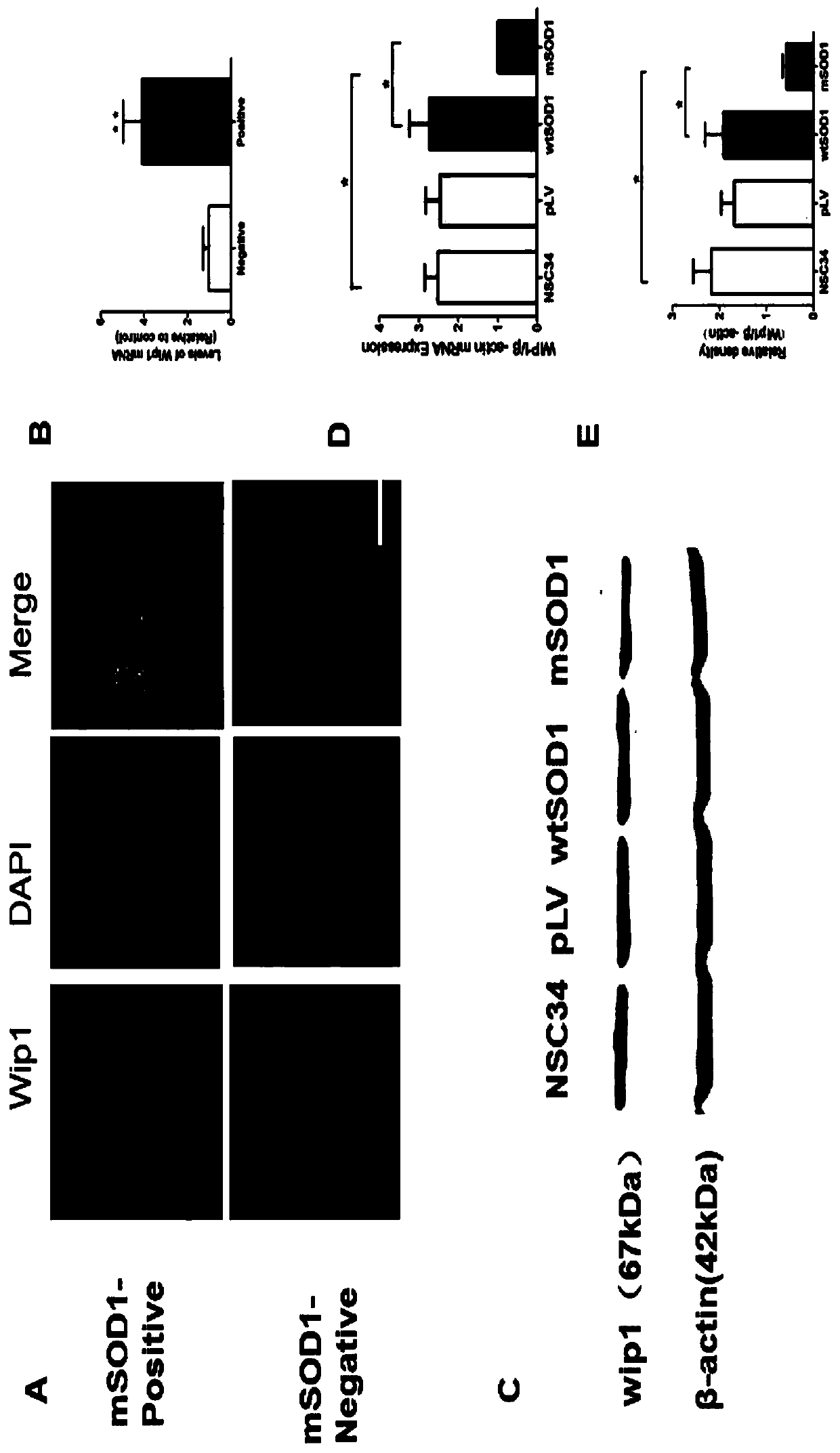Wip1 gene and purpose of its expressed protein in treatment of amyotrophic lateral sclerosis
A technology for lateral sclerosis and muscular atrophy, applied in the field of neurobiology, can solve the problems of lower incidence of neurodegenerative diseases and decreased expression
- Summary
- Abstract
- Description
- Claims
- Application Information
AI Technical Summary
Problems solved by technology
Method used
Image
Examples
Embodiment 1
[0057] 1. Methods and Materials
[0058] 1. Experimental animals and reagents
[0059] 1.1 Experimental animals and cells
[0060] Mice were purchased from Jackson Laboratory, USA. After co-caging, offspring were bred. After genotype detection, 15 transgenic C57BL / 6J hSOD1G93A genotype-positive mice and 15 C57BL / 6J wild mice were collected, half male and half male.
[0061] NSC-34 cell line was purchased from CEDARLANE Company.
[0062] The previous research group has successfully constructed, flow laser sorted and stably passaged the pLenti viral-NSC34 cell line, wtSOD1-NSC34 cell line and hSOD1G93A NSC34 stably transfected cell line, and divided them into four groups, named as the blank control group (Control group). ), empty virus group (pLV group), wild type group (wtSOD1 group), mutant group (mSOD1 group).
[0063] Primary neurons were obtained from fetal mouse cortical neurons and cultured in Neurobasal medium.
[0064] 1.2 Main reagents
[0065]
[0066]
[0...
PUM
 Login to View More
Login to View More Abstract
Description
Claims
Application Information
 Login to View More
Login to View More - R&D Engineer
- R&D Manager
- IP Professional
- Industry Leading Data Capabilities
- Powerful AI technology
- Patent DNA Extraction
Browse by: Latest US Patents, China's latest patents, Technical Efficacy Thesaurus, Application Domain, Technology Topic, Popular Technical Reports.
© 2024 PatSnap. All rights reserved.Legal|Privacy policy|Modern Slavery Act Transparency Statement|Sitemap|About US| Contact US: help@patsnap.com










